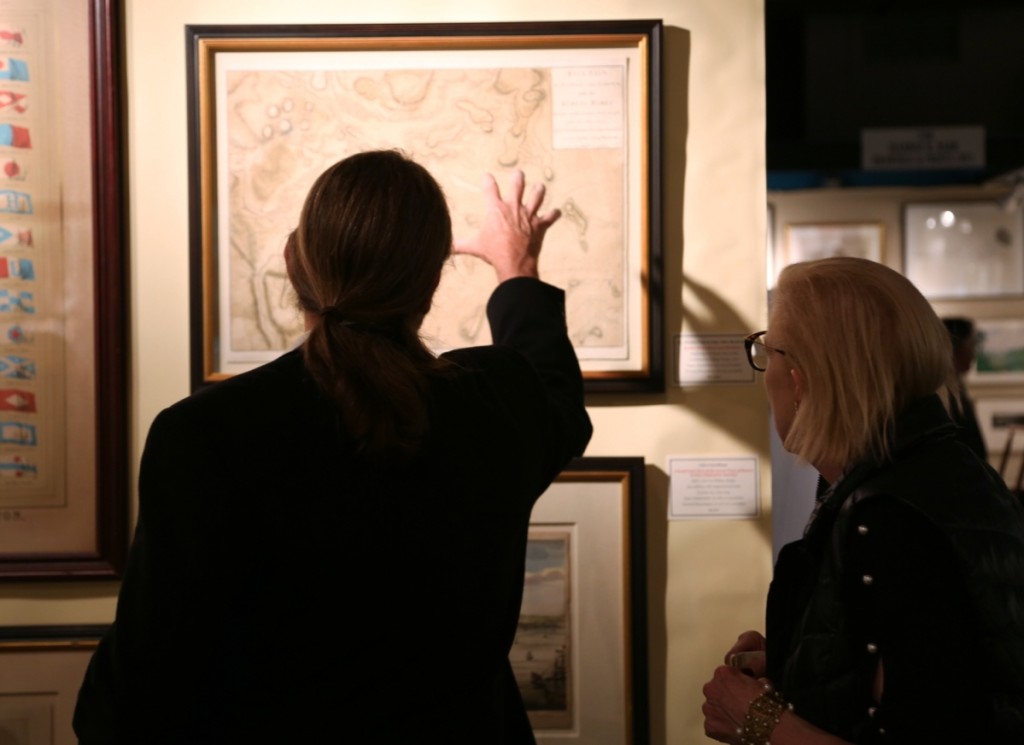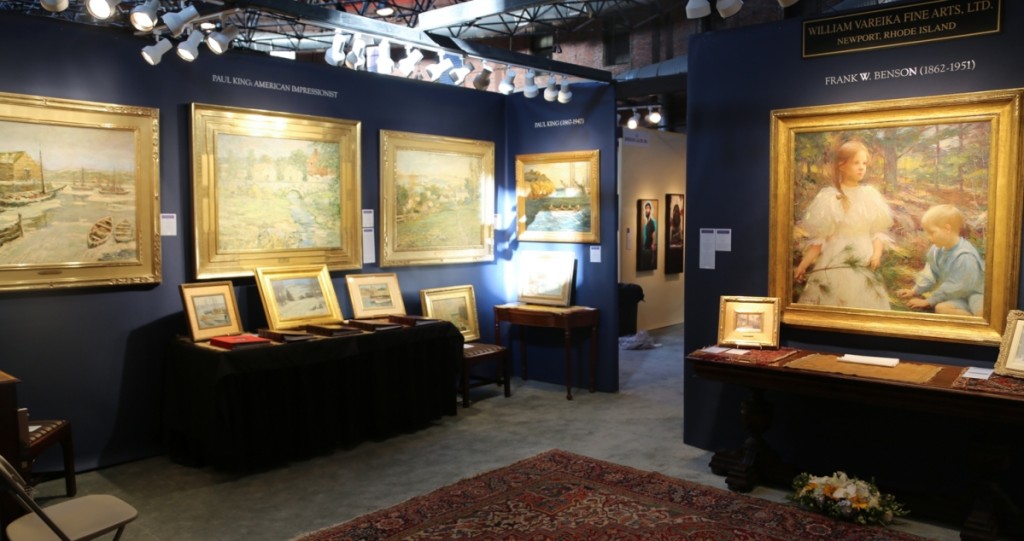
William Vareika Fine Art, Newport, R.I., showed a trio of American Impressionist painter Paul Bernard King’s works on the left wall. King painted all along the Northeastern seaboard, including Maine, French Canada and Pennsylvania. On the right, Vareika showed off a notable painting by Frank Weston Benson,
“Children in the Woods.”
Review and Photos by Greg Smith
BOSTON – A husband and wife walked into the booth of Tony Fusco and Bob Four, show managers and dealers at the Boston International Fine Art Show October 19-22, as the wife asked if she could momentarily rest in one the chairs that sat idly in the corner; her legs had grown tired from walking around the annual 40-dealer show. Fusco cordially obliged and directed the woman to the chair as they struck up a conversation.
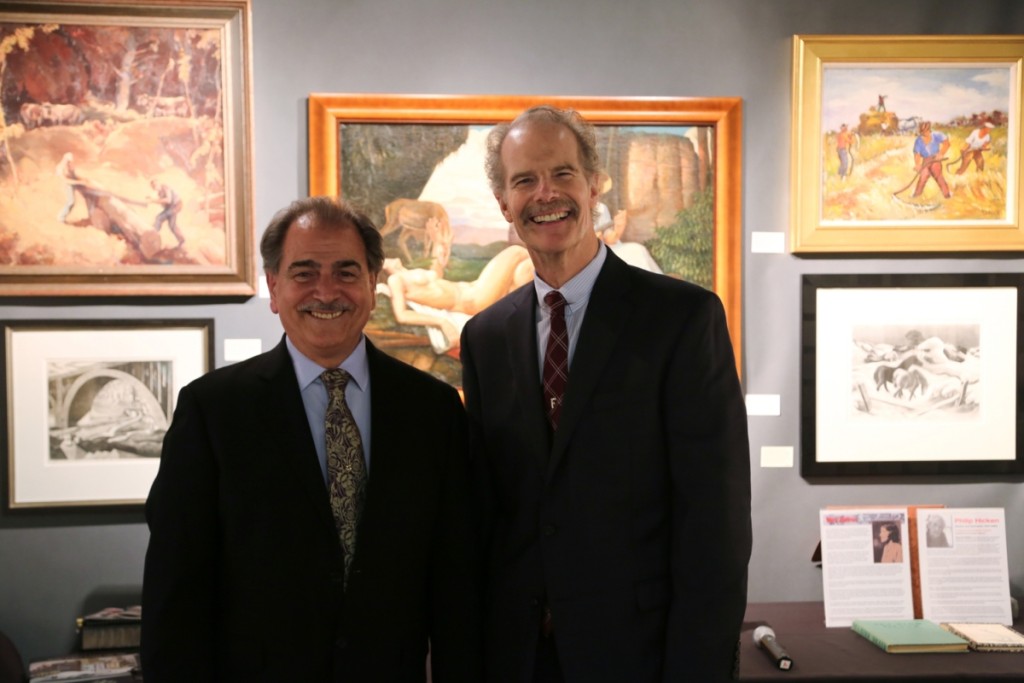
Show managers Tony Fusco and Robert Four were all smiles at the BIFAS opening gala Thursday, October 19. The event hosted more than 400 attendees, including collectors, institutional buyers and regular art patrons.
“We love the show,” she said. “We come all the time. And two years ago, we bought a very expensive painting here.” The husband, who had been listening until now, saw his golden opportunity to let the cat out of the bag and said, much to his wife’s surprise, “And tonight we bought another one.”
Surprises were plentiful at the 21st edition of Beantown’s mainstay art show, as the Cyclorama at Boston Center For The Arts was transformed into a glimmering gallery of domestic and international dealers with a spread of art that was stylistically varied, relevant and visually quenching. Significant works from some of the America’s finest historical artists were represented amid a wide variety of contemporary art from around the world – all of it finding its home on gallery-lit booth walls to be awed and admired by the 2,000-plus people who poured through the doors for the four-day event.
“Everyone I spoke to said they thought it was, visually, the best show we’ve ever had,” said Tony Fusco. “It’s difficult to curate the material, put this dealer next to that one – the juxtaposition of the dealers means a lot to them as well as us. So, we were thrilled with that.”
The planning paid off in the form an energetic show floor that brought viewers through the bountiful and rewarding annals of art history.
Amid their specialized offerings of lithographs and engravings from well-known artists who studied the natural world, including John James Audubon, Dr Robert John Thornton and Francois-Andre Michaux, Arader Galleries, Philadelphia and New York City, exhibited a pen, ink and graphite drawing of Sitting Bull by Rudolf Cronau. Drawn in 1881, the portrait features the chief of the Dakotas in full headdress before a background of faded teepees, a distant stare in his eyes met with a stern expression on his face.
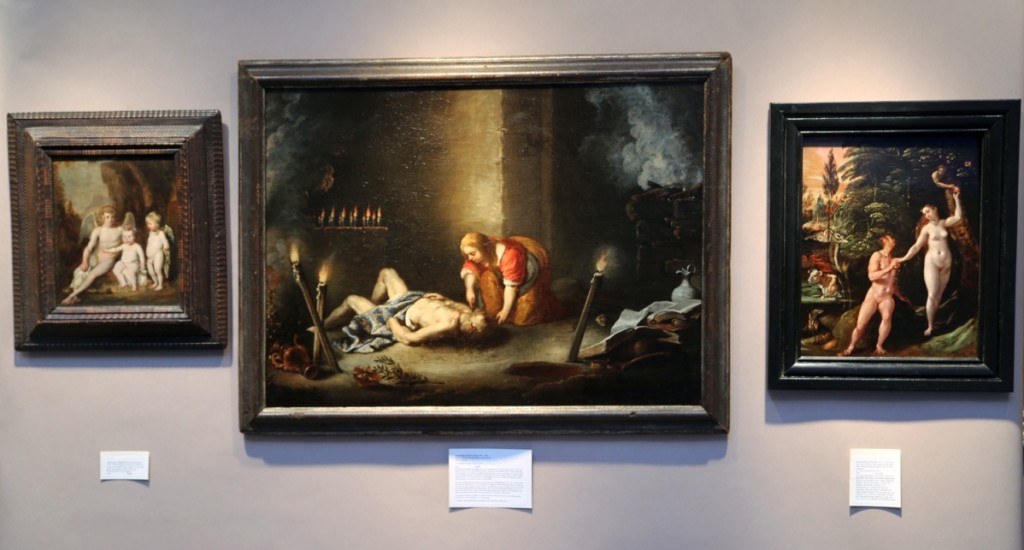
Three vivid Seventeenth Century paintings hung center in the booth of Christine Magne Antiquaire, Philadelphia. From left “Adam and Eve in the Garden of Eden,” from a Haarlem school artist, “Medea restoring Aeson’s youth” by Anton Maria Vassallo and “Group portrait of three children in the guise of Cupid and two angels,” attributed to Thomas de Keyser.
While writing and illustrating on assignment for the German newspaper Die Gartenlaube, Cronau traveled to the far West of the United States in the Nineteenth Century, where he met and spent time with many Indian chiefs. As the chief sat for Cronau, he reportedly told him that he had never sat for a white artist before as he spoke lamentedly about the fate of the American Indian. Signed by Sitting Bull himself, Arader believes the work to be the only life portrait of Sitting Bull in existence.
Chicago-based Galerie Fledermaus brought a selection of symbolist and expressionist artworks by Gustave Klimt and his protégé Egon Schiele. Along the side wall were two works of note by contemporary artist Jason McPhillips. “Voice (Twilight and Dawn)” is a pair of paintings that feature a near-full length nude standing on a beach before crashing waves and holding in her hands the luminous star constellation Lyra, casting a bright glow onto her face.
The paintings’ backstory will be butchered in so few words, but they depict an experience in the artist’s young life where he met and fell in love with a girl on a starry vacation night, only for her to be murdered later in the evening after they parted. The experience has pushed McPhillips through his artistic career and here manifests itself in a raw and allegorical pair of paintings that, when told the backstory, were enough to leave the viewer breathless.
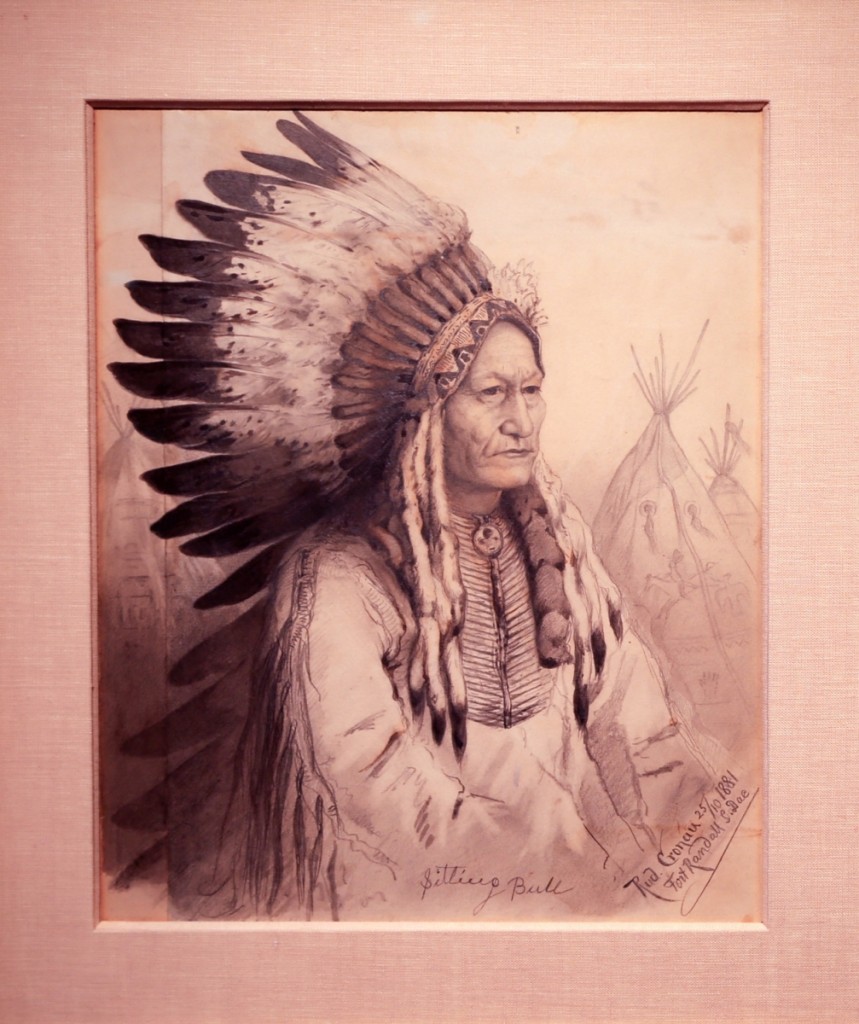
Arader Galleries, Philadelphia, believes this to be the only live portrait of Sitting Bull in existence. By Rudolf Cronau and signed by Sitting Bull himself, this was reportedly the first time Sitting Bull ever sat for a white artist, and possibly his last.
A selection of new arrivals from Questroyal Fine Arts was on exhibition in the New York City dealer’s booth, including regional and coastal works as well as landscape paintings. Works by Hayley Lever, Marsden Hartley, Edmund Ashe, Edmund Greacen, Charles Burchfield and William Trost Richards were on full display.
Hanging toward the top of the display was a humble neighborhood winter scene by Martin Gasser, featuring yellow, red and white row houses in the midst of winter, snow icicling off their roofs and an old car parked on the road. Many of Gasser’s paintings depict a realistic view of communal life, whether by showing a figure’s cold slog through a snowy townscape or a brightly lit coastal fishing scene. Questroyal is hosting an exhibition of the American artist’s work in its gallery, titled “Bound For Posterity,” running through December 9.
Avery Galleries, Bryn Mawr, Penn., offered a selection from its ongoing exhibition “American Women Artists, 1860-1960,” featuring artists Mary Cassatt, Lilla Cabot Perry, Claude Raguet Hirst, Laura Coombs Hills, Gertrude Fiske, Isabel Cartwright, Marguerite Zorach and others. Transported from the show to the booth’s wall was “Portrait of a Young Woman,” an oil painting completed in 1930 by Margarett Sargent. Of course, the name is familiar – a relative of John Singer Sargent – but Margarett indeed carried a shorter life as a painter, though she is thought of as one of Boston’s earliest Modernists.
“Modernism came late to Boston,” said Nicole Amoroso, gallery director. “Sargent is known for these portraits of women and a wonderful sense of color.”
But the confines of a new marriage and family pressures were too much for the artist, as she abruptly gave up painting and turned to gardening instead, struggling with mental health and addiction afterward. It proved difficult to distance her portrait from her backstory: a society lady sat sideways in a chair, her arms resting on the chair back, well-dressed with her yellow scarf complementing her striped blue sweater and flowing red hair, and two roses hanging off the table to her side, a melancholy and far away expression in the subject’s face. The exhibition continues through November 10.
“Paul King is an artist many people don’t know of,” said William Vareika of the Newport, R.I., gallery that bears his name. The dealer dedicated a wall to the American Impressionist painter with three good-size paintings at the helm, two village scenes and a coastal snowscape. “He ranks in terms of quality with Ernest Lawson. King loved the New England coast, with scenes of Maine, French Canada and Pennsylvania.”
Like many Impressionists, nature was a focal point for King, who heralded numerous awards for his works from the Salmagundi Club and the National Arts Club, as well as exhibiting at the Panama-Pacific International Exposition in 1915, the Art Institute of Chicago, Corcoran Gallery and at the Carnegie Internationals.
The show managers tried something new this year, and to grand effect, by including a sponsor of the show, Israeli jewelry dealer Yvel, into their floor plan. The jewelry display “gave an immense amount of energy to the show,” said Tony Fusco, as he hinted that an upcoming vacation to Florence, Italy, is not entirely for play. “Having a sponsor like Yvel was a huge success and we’re going to try to do something for next year to replicate that kind of energy. Definitely hoping to come back with a huge surprise.”
The Boston International Fine Arts Show will be back at the Cyclorama in October 2018. For more information, www.fineartboston.com or 617-363-0405.

